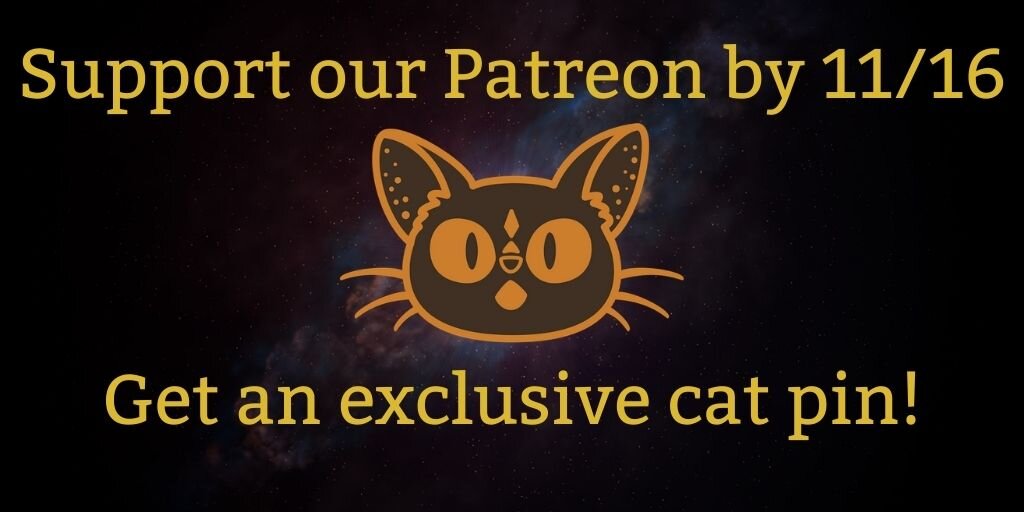Five Ways To Grow Your Patreon!
So, you've launched a Patreon, and it's supposed to be a dream come true: steady income, a community of your true fans, a place to create. However, after a little burst of backers at the beginning, it's gone completely stagnant. This is totally normal. How can you get new Patreon backers?
Here are five steps you may be missing toward getting the Patreon income you deserve!
1 - Offer free content so people know what they’re getting
Patreon was created by the wonderful Jack Conte, who is a member of the YouTube band Pomplamoose. Like many successful Patreon creators, Pomplamoose grew their large Patreon backing only after years of releasing free content on the Internet, thus building up an audience and good faith.
If you're starting a new creative endeavor, consider starting by posting your art, podcasts, music, or writing for free online before hiding it behind the Patreon paywall. Grow a dedicated audience base that knows what to expect, likes you, and wants to support your creative endeavor!
2 - Rethink your rewards
As a Patreon creator and backer myself, I think of Patreon reward levels as a "pay what you can" donation jar instead of a "store." If you're following step one and releasing great art online for everyone to see, you are already doing great work, and supporters who come to Patreon want to keep that happening, so you don't necessarily need to reinvent the wheel or give away the whole house when it comes to rewards. That being said, here are some tips for rewards:
Start your reward levels at $2-5 minimum. A $1 donation is mostly eaten up by fees, and a $2 donation is twice as much, but doesn't feel like much more on the donor side.
Try to offer products that are very easy to fulfill while still providing value - like links to digital products that you've already created, early access to things you will make anyway, and high-resolution or behind-the-scenes versions of your other creations.
Keep your reward levels extremely sleek. 4 levels is the most you should probably need.
Look at successful Patreon pages and copy! Be an active consumer of art.
3 - Warm up your audience
You need to promote your Patreon to get people to back it, absolutely. However, you shouldn't promote your Patreon page to people who don't care about you yet. When a fan first hears about you, they should get excited, they should dig into your art, they should get to know you as a person, they should experience more art, and then they should invest their money. So set up ways for all of these things to happen!
So, in addition to having a small trove of free, easy-to-access videos, music, or art on your website and social media, you should also include information about you as an artist. What are your interests? Why do you create? What's your story? The more people know, the more they care. This is where cat photos come in, by the way. Share them. Share them all!
4 - Invigorate your following with deadlines
When you were in school, chances are, you didn't work on the "big project" until the very last minute. Most of us don't grow out of our procrastinating habits. This theory bears out in the statistics for sales and marketing, as well — people wait til the last minute to get the good sale, to back the Kickstarter, or to sign up for that cool class. You can bring some excitement, and some new backers, to your Patreon by running a limited-time offer. There are lots of fun ideas here. You can have a goal - "If I get 100 backers by November 1, I will make a video about [a requested topic]." Alternately, you could have a special offer - "Anyone who backs before my birthday will get an cat pin mailed to them!"
My band got 100 new backers this way, and Patreon has added it as a built-in feature for some creators. It really works!
5 - Consider your goal: would a different platform make more sense?
Patreon is an excellent platform for creative endeavors like podcasts, YouTube channels, and ongoing creations. However, if you want to make just one thing with a concrete beginning and end—like an album, video, or a discrete number of podcast episodes—your project may be a better fit for Kickstarter or another "one-time" campaign platform. The bonus is that a one-time campaign may reach folks who don't want to set up yet another ongoing subscription. My band, for example, sees about four times as many people backing our Kickstarters as our Patreon.
If you do want to do an ongoing subscription-type crowdfunding campaign, you might also consider that your audience may not know how to use Patreon, or may not want to sign up for the platform. In that case, you may look into platforms like PayPal, Ko-fi, Bandcamp, or Bandzoogle, which allow you to set up more direct subscriptions without the Patreon platform.
Make a plan with me! Download my free 30-day promotion plan for crowdfunding creators here! It'll work for any campaign you're working on, whether it's a limited-time push for your Patreon or a full month for your Kickstarter!


